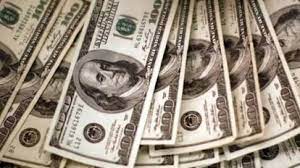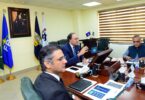WASHINGTON (Reuters): The US Dollar (USD) climbed to its highest in almost three months against other major currencies on Monday as traders clawed back bets the U.S. Federal Reserve would aggressively cut interest rates this year after new economic data further diminished those odds.
U.S. services sector growth picked up in January as new orders increased and employment rebounded, suggesting economic growth momentum from the fourth quarter spilled over into the new year.
The data added to Friday’s blockbuster U.S. jobs report that far exceeded expectations and forced the market to readjust its outlook for rate cuts, the dollar’s strength and how high Treasury yields, which act to bolster the U.S. currency, can go.
“The question is, who can keep up with the U.S. in terms of the rates adjustment?” said Steven Englander, head of global G10 FX research and North America macro strategy at Standard Chartered Bank in New York. “The market’s answer so far is not too many central banks and not too many of their currencies.”
Treasury yields rose further on Monday after Fed Chair Jerome Powell said over the weekend that the U.S. central bank could “give it some time” before cutting rates.
The dollar index , which tracks the greenback against six other major currencies, rose to 104.59, its highest since Nov. 14, and was last up 0.53% at 104.58.
The two-year Treasury yield was last up 10 basis points at 4.478%, after jumping 18 bps on Friday.
The euro fell to its lowest since Nov. 14 at $1.0721 and was last down 0.60% at $1.0727.
In an interview with the CBS news show “60 Minutes” that aired on Sunday night and was conducted a day before the jobs report on Thursday, Powell said the Fed could be patient in deciding when to cut its benchmark interest rate.
“The prudent thing to do is … to just give it some time and see that the data confirm that inflation is moving down to 2% in a sustainable way,” Powell said.
Japan’s yen fell to its lowest since early December in early Asia trade at 148.82 per dollar, and was last at 148.79.
Jane Foley, head of FX strategy at Rabobank, said a weak euro zone economy was also likely weighing on the euro.
“We have stagnation in Germany,” Foley said. “I think we’re going into a period when it’s going to be really hard for the euro to make significant gains.”
Data on Monday showed that German exports fell more than expected in December due to weak global demand.
RATE CUT EXPECTATIONS
Fed funds futures now show roughly 113 basis points (bps) worth of easing priced in for the Fed this year, down from about 150 bps at the end of last year.
A March cut is now seen as a 14.5% possibility, down sharply from around 50% a week ago.
Sterling was down 0.88% to $1.252, its lowest since Dec. 13, as the dollar rallied.
The pound showed little reaction to revised data that indicated Britain’s unemployment rate was lower than expected at the end of the year.
Elsewhere, China’s central bank continued to use the official guidance fix to keep its currency stable, after setting the midpoint rate for the yuan firmer than Reuters’ estimate.
That supported the onshore yuan slightly, though it still struggled against the stronger dollar to finish the domestic session at 7.1982, the weakest close since Nov. 17.







